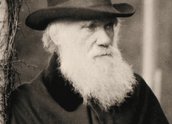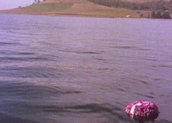


First Australians – Episode 2, Her Will to Survive (2008)
Synopsis
This episode covers the period from 1825–60 and explores the history of European settlement in Tasmania through the stories of Truganini and George Augustus Robinson.
Colonisation spreads south to Tasmania, along with the settlers’ desire for land occupied by the Tasmanian Aboriginal people. Although there is talk of conciliation, it is decided to remove the Tasmanian Aboriginal people to an island in Bass Strait. The Government enlists Englishman George Augustus Robinson for the job, and he is helped by a young Aboriginal woman, Truganini.
Curator’s notes
As in other early episodes in the series, this one is told through archival illustrations and photographs combined with artful sound design and talking heads. What is done particularly well in this episode are representations of historical events on the frontier through images of stunning landscapes accompanied by haunting soundscapes. The stories and the emotions of the frontier are clearly conveyed through this method, without resorting to outright re-enactment.
The historians in episode two weigh up the character and motives of the featured personalities, Robinson and Truganini (see clip one). It is contested whether Robinson wanted to help Aborigines out of Christian, charitable intentions or as a self-serving act to gain fame and governmental approval. Despite his actual intentions and previous failed mission attempt (on Bruny Island) he was still able to convince the Aborigines to follow him to Flinders Island.
The episode puts this down to a few factors: Truganini’s skill as a negotiator, the threat of the ‘Black Line’ and a promise from the government that they could return to their own lands after the conflict was over. Unfortunately, those that followed Robinson never saw their own land again. This failed promise by the government is a disturbing reminder, and proof, of the colonisers’ disregard for the rights and lives of the Indigenous people of this country.
This is really a story of survival of Tasmanian Aboriginal people. Life in 19th Century Tasmania was a constant fight to just survive in a world of violence. Individuals like Truganini endured an incredibly harsh life, including a declaration of martial law, a bounty on Aboriginal heads, abduction by sealers, the Black War of 1828–32, the Black Line in 1830, widespread disease and a potential hanging. She was eventually, and mistakenly, named the ‘Last Tasmanian’ (clip three), however official histories, and this episode, often neglect that others were subsequently given the title of ‘Last Tasmanian’ – such as Fanny Smith, a contemporary and friend of Truganini, in 1899.
Smith’s recordings of Aboriginal language and songs are the only surviving records of Tasmanian culture from this period (Fanny Smith’s Tasmanian Aboriginal Songs) and many of the Aboriginal community in Tasmania today trace their heritage back to Fanny Smith. Despite an inherited history of violence and historical racism Tasmanian Aboriginal people maintain a strong culture and are proud in their declaration that ‘we exist’.
As in many of the stories told in this series, little is known of this period in Australian history and it is very highly contested. The debate over the history of Tasmania and the fate of its original inhabitants has been dubbed the ‘History Wars’. It started in 2002 when Keith Windschuttle published The Fabrication of Aboriginal History: Volume One: Van Diemen’s Land 1803–1847 (2002), which accuses a number of Australian historians of falsifying and inventing the degree of violence experienced in Tasmania.
Among these historians were Henry Reynolds and Lyndall Ryan, who are featured in this episode; their accounts of history were described by Geoffrey Blainey and Keith Windschuttle as a 'black armband’ view of history. Marcia Langton alludes to this conflict when she states in the episode that 'terrible histories are often lied about’. Rebe Taylor, in a Sydney Morning Herald review of a collection of essays called Whitewash: On Keith Windschuttle’s Fabrication of Aboriginal History (edited by Robert Manne), wrote ‘Windschuttle continues an Australian tradition of justifying and silencing colonial injustices. This tradition runs deep only because there is so much to justify, and so many voices to silence.’
This episode was first broadcast on SBS on Tuesday 14 October 2008.
- Overview
- Curator’s notes
- Video 3 clips
- Principal credits
- Find a copy
- Make a comment
- Map
- Add your review



